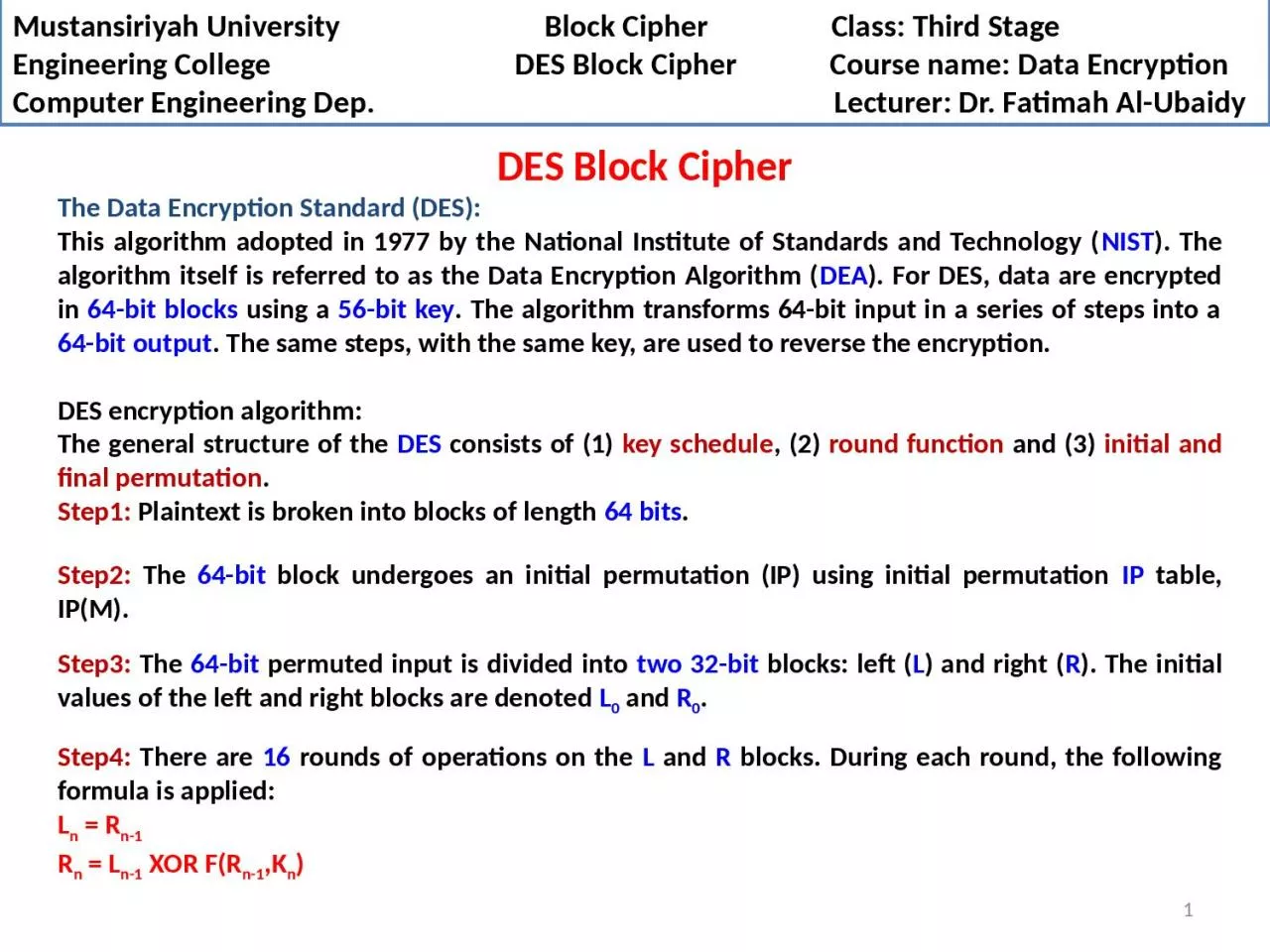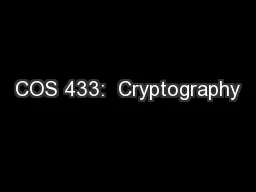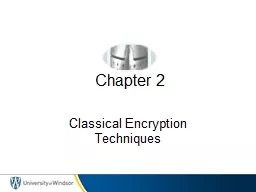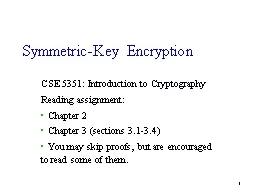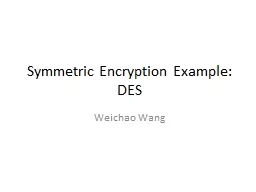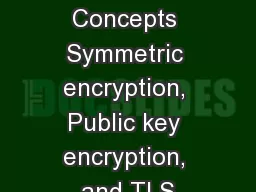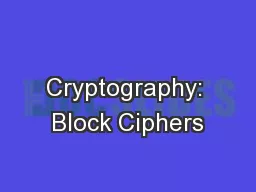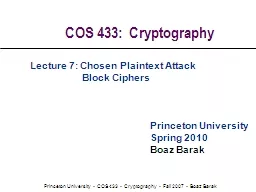PPT-1 DES Block Cipher The Data Encryption Standard (DES):
Author : ximena | Published Date : 2022-06-11
This algorithm adopted in 1977 by the National Institute of Standards and Technology NIST The algorithm itself is referred to as the Data Encryption Algorithm
Presentation Embed Code
Download Presentation
Download Presentation The PPT/PDF document "1 DES Block Cipher The Data Encryption..." is the property of its rightful owner. Permission is granted to download and print the materials on this website for personal, non-commercial use only, and to display it on your personal computer provided you do not modify the materials and that you retain all copyright notices contained in the materials. By downloading content from our website, you accept the terms of this agreement.
1 DES Block Cipher The Data Encryption Standard (DES):: Transcript
This algorithm adopted in 1977 by the National Institute of Standards and Technology NIST The algorithm itself is referred to as the Data Encryption Algorithm DEA For DES data are encrypted in . Winifreds Virginia Stamford Hill Walter Reid Stanmore Warner Beach Stonebridge Washington Heights Stonebrigde Waterfall Stonehill Waterloo Sunford Watsonia Princeton University . Spring 2010. Boaz Barak. Lecture 7: . Chosen Plaintext Attack. Block . Ciphers. Short Review of PRF construction. 2. G. f. s. (x). Snapshot after . i. invocations.. Short Review of PRF construction. Classical Encryption Techniques. "I am fairly familiar with all the forms of secret writings, and am myself the author of a trifling monograph upon the subject, in which I analyze one hundred and sixty separate ciphers," said Holmes.. CSE 5351: Introduction to Cryptography. Reading assignment:. Chapter 2. Chapter 3 (sections 3.1-3.4). You may skip proofs, but are encouraged to read some of them.. 2. Computational Difficulty (One-Way Functions). Aalto . University. , . autumn. . 2012. Outline. Symmetric encryption. Public-key encryption. Cryptographic authentication. 2. Most. . important. !. Brief. . introduction. to . encryption. and . Sixth Edition. by William Stallings . Chapter 3. Block Ciphers and the Data Encryption Standard. “All the afternoon Mungo had been working on Stern's code, principally with the aid of the latest messages which he had copied down at the Nevin Square drop. Stern was very confident. He must be well aware London Central knew about that drop. It was obvious that they didn't care how often Mungo read their messages, so confident were they in the impenetrability of the code.”. Symmetric ciphers . 2. part 1. Block ciphers - definition. Block cipher . encipherment . provides confidentiality by transforming a plaintext message into a ciphertext message, by means of a special function.. An . Introduction to . Block Ciphers. Rocky K. C. . Chang, February 2013. Outline. 2. Product and iterated . ciphers. A simple substitution-permutation network. DES and AES. Modes of operations. Cipher block chaining. Termasuk ke dalam . cipher. abjad-majemuk (. polyalpabetic substitution cipher. ). .. D. ipublikasikan oleh diplomat (sekaligus seorang kriptologis) Perancis, Blaise de Vigènere pada abad 16 (tahun 1586). . Weichao. Wang. 2. Overview of the DES. A block cipher:. encrypts blocks of 64 bits using a 64 bit key. outputs 64 bits of ciphertext. A product cipher. basic unit is the bit. performs both substitution and transposition (permutation) on the bits. Cryptography. Is:. A tremendous tool. The basis for many security mechanisms. Is not:. The solution to all security problems. Reliable unless implemented and used properly. Something you should try to invent yourself. David . Brumely. Carnegie Mellon University. Credits:. Slides originally designed by David . Brumley. . . Many. other slides are from Dan . Boneh’s. June 2012 . Coursera. . crypto class.. What is a block cipher?. David . Brumely. Carnegie Mellon University. Credits:. Slides originally designed by David . Brumley. . . Many. other slides are from Dan . Boneh’s. June 2012 . Coursera. . crypto class.. What is a block cipher?. COS 433: Cryptography Princeton University Spring 2010 Boaz Barak Lecture 7: Chosen Plaintext Attack Block Ciphers Short Review of PRF construction 2 G f s (x) Snapshot after i invocations. Short Review of PRF construction
Download Document
Here is the link to download the presentation.
"1 DES Block Cipher The Data Encryption Standard (DES):"The content belongs to its owner. You may download and print it for personal use, without modification, and keep all copyright notices. By downloading, you agree to these terms.
Related Documents

